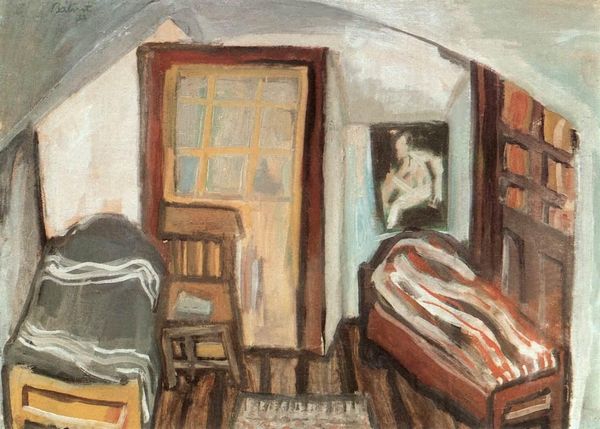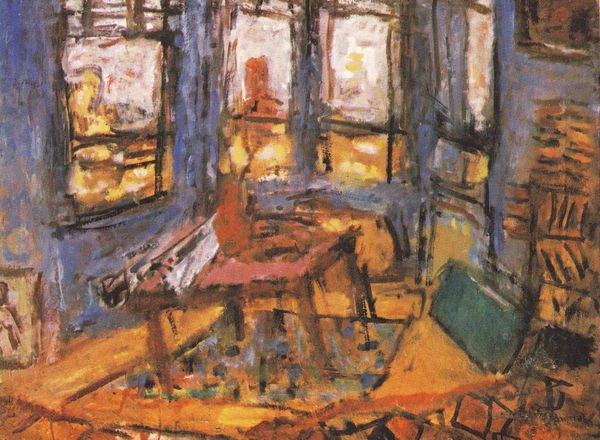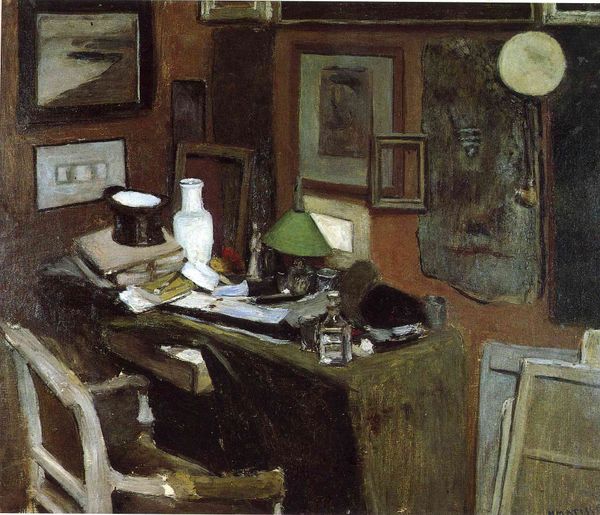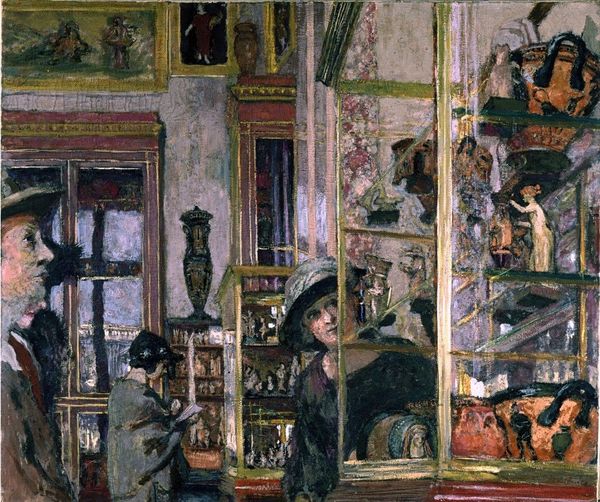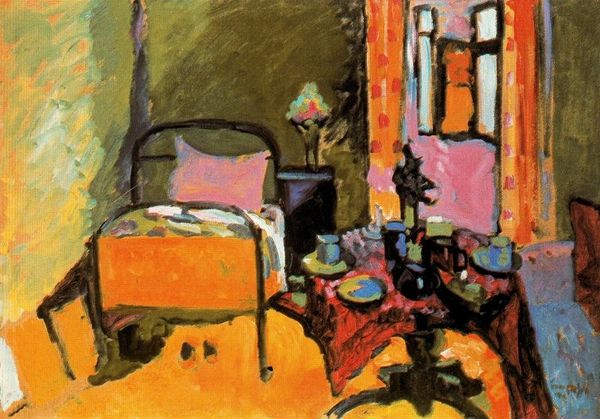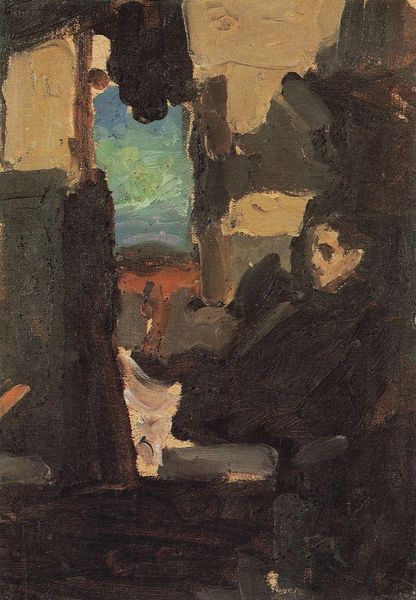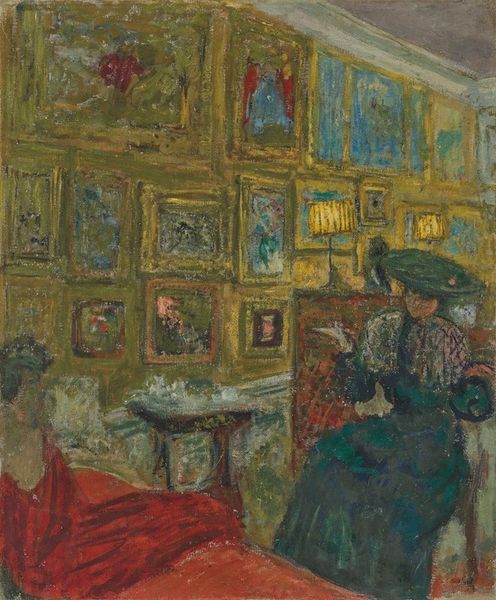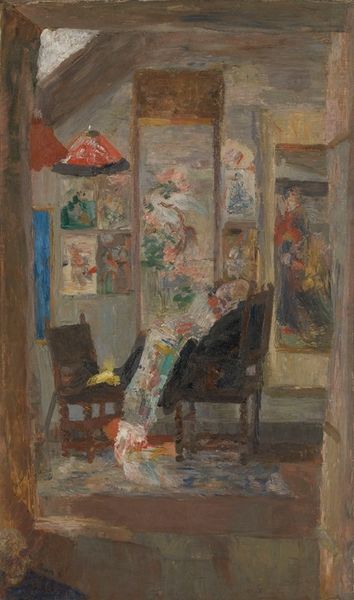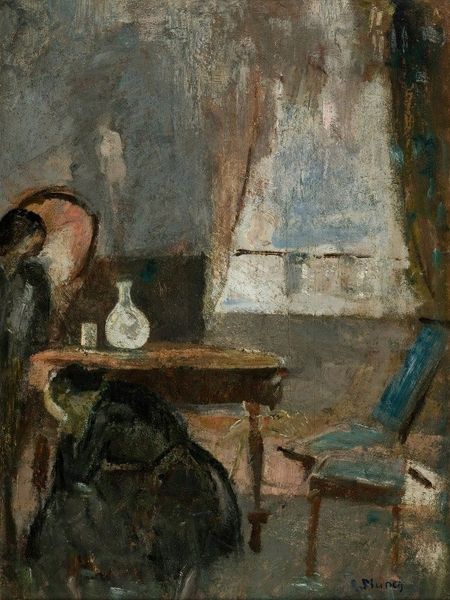
#
bloomsbury-group
Copyright: Public domain
Curator: Roger Fry's 1912 painting, “A Room (in the Second Post-Impressionist),” it's currently on display in Gallery 3. What strikes you most about it? Editor: Immediately? The somberness. It feels like stepping into a space of quiet contemplation, almost a melancholic waiting room. All of those muted greens and browns definitely contribute to the feeling of waiting for a revelation. Curator: Yes! It has a curious, self-contained quality. Knowing Fry, that feeling is very much by design. He sought to capture not just visual reality but also emotional space, inner life, the whole blooming oyster! This work, done in oil paint, is really interesting from a sociohistorical perspective, particularly considering Fry’s influence within the Bloomsbury Group and his role in introducing Post-Impressionism to Britain. Editor: It certainly presents the artist as both subject and observer, seated there reading in the room’s subdued light. There's also the room itself, full of its own art...art within art. The scene gives the sense of exclusive society or a kind of self-sustaining cultural bubble. But there are very interesting nuances, if we note his awareness about Modernism and how Post-impressionism impacted other contemporary movements, and even the identity of that sole sitter, the impression on him with an era of changes and transformations... Do you have insight on how the artist’s awareness connects? Curator: The scene embodies, visually, Fry’s own arguments for art being independent from historical or social context; a self-contained aesthetic experience! And yet the act of creation is itself a social act! But speaking from personal experience, when one's making the art...the work, at least for me, can be all consuming! Editor: Right, and to Fry's perspective—which I tend to contest—by focusing solely on the aesthetic qualities, are we perhaps missing the nuances of gender, class, and societal power structures inherent in this particular, cultivated, ‘aesthetic’ experience? Curator: Perhaps we circle back to the painting as document? To be fair to Fry, he had no idea he’d be fuel for a future activist. But it is hard to consider this tableau without its implications about the period itself. It gives one pause, don't you think? Editor: It certainly does. A testament to art's ability to both reflect and be interrogated by the times. Thanks for providing an insightful view into Roger Fry’s creation, bridging past and present, and demonstrating its ever-relevant narrative. Curator: Thanks. It seems a picture really is worth a thousand words and then some!
Comments
No comments
Be the first to comment and join the conversation on the ultimate creative platform.

